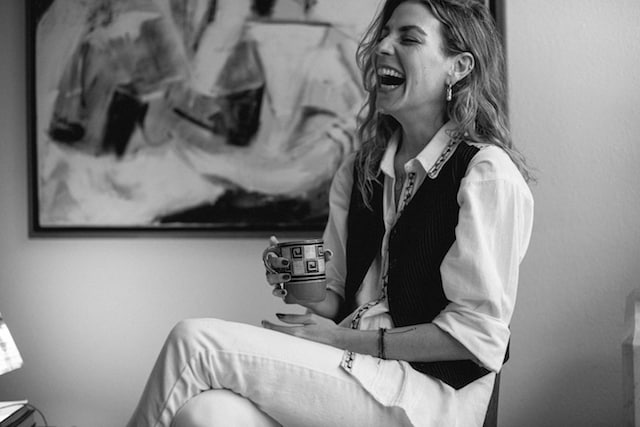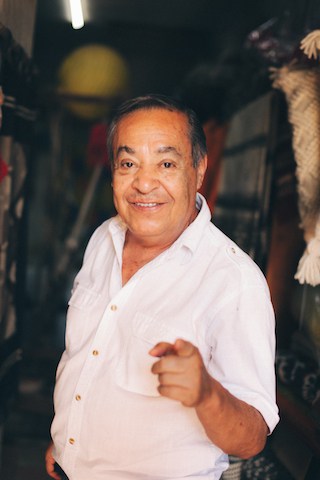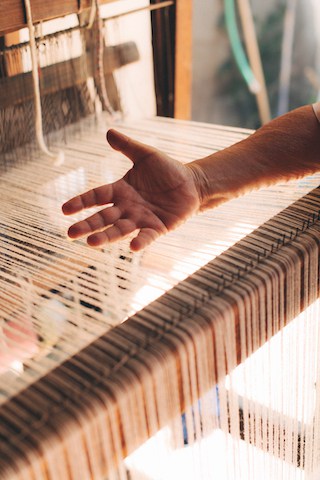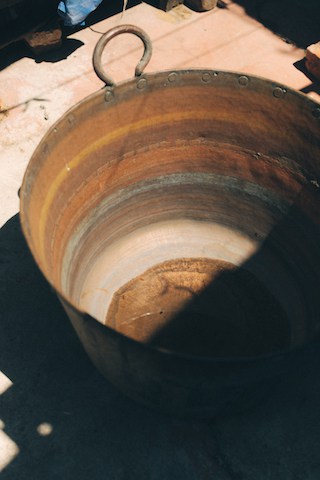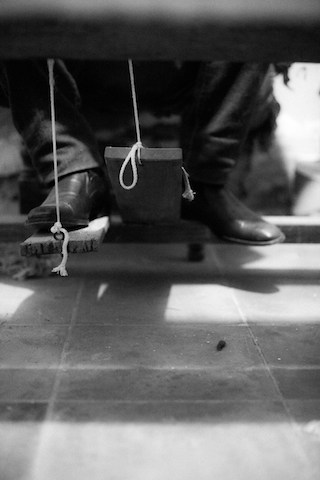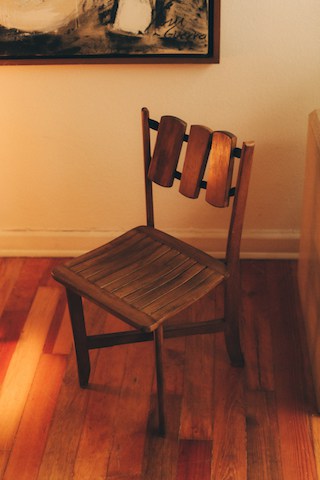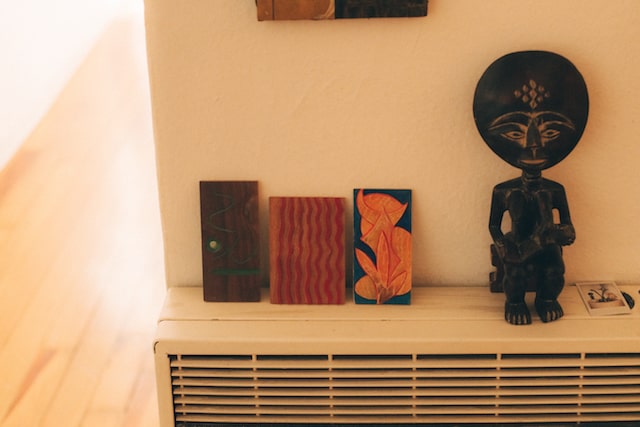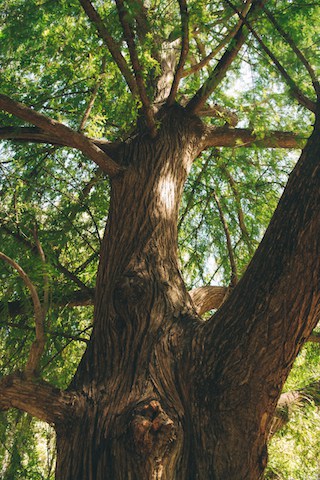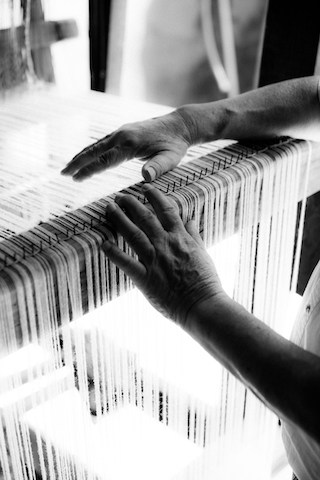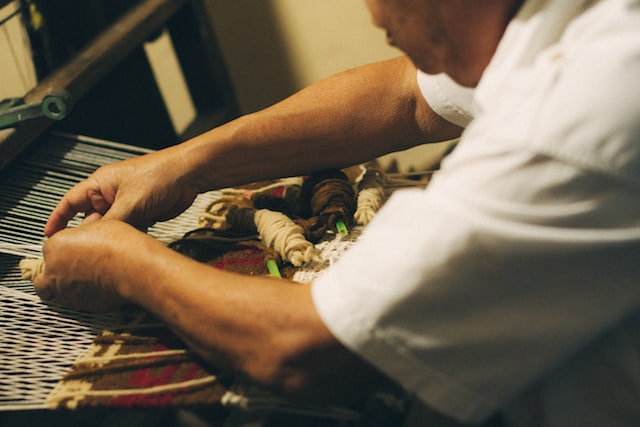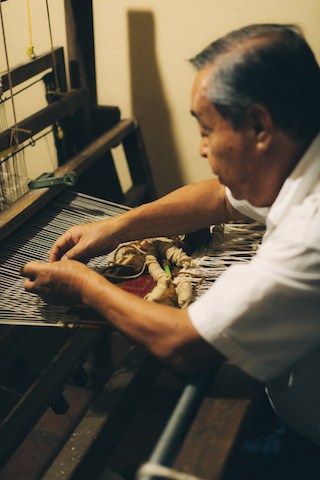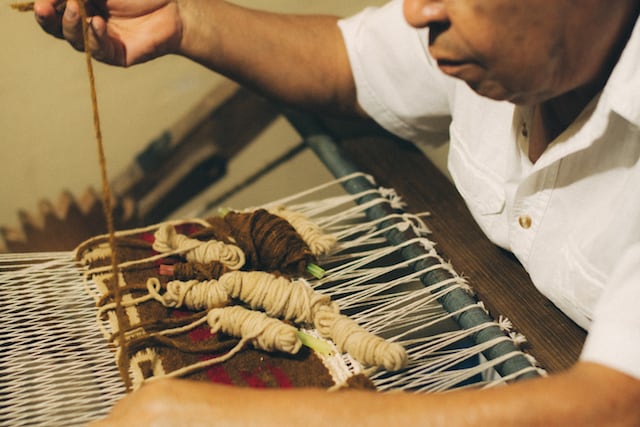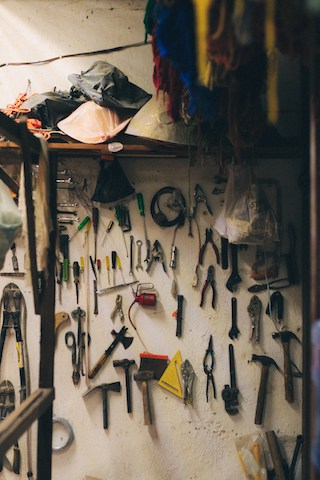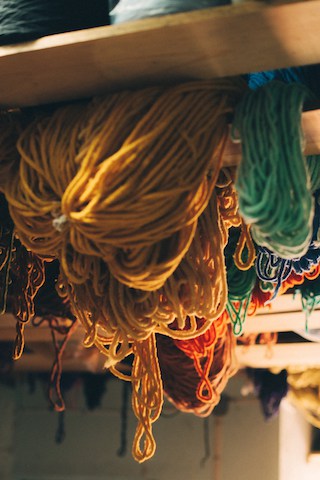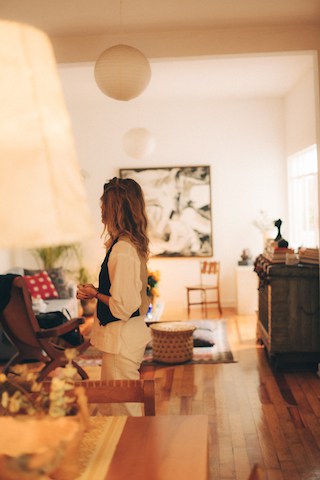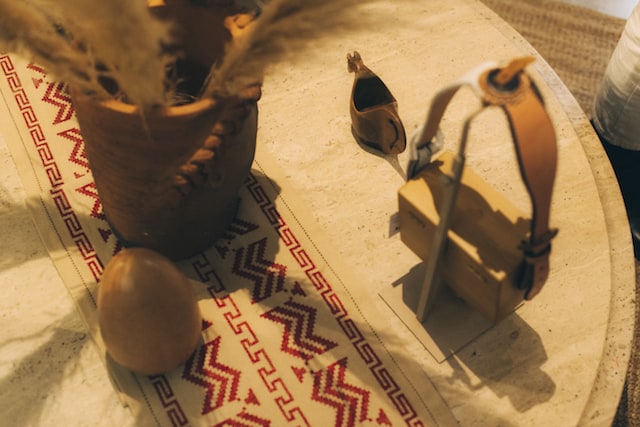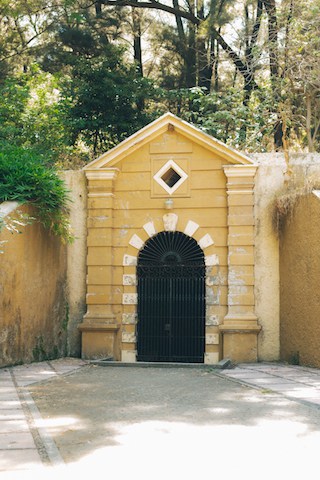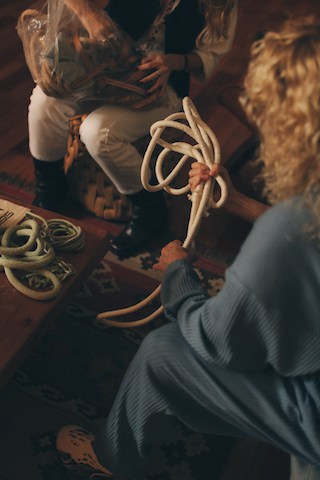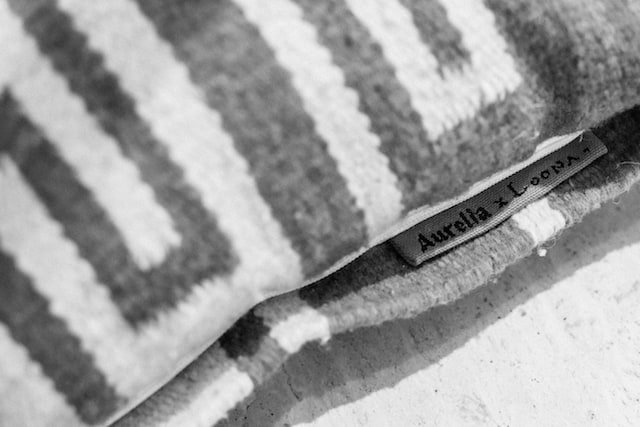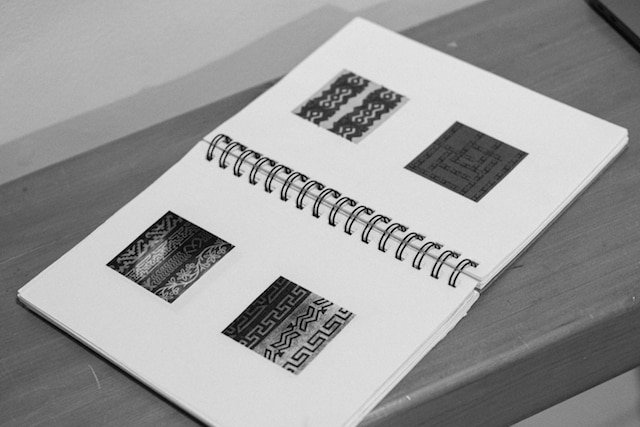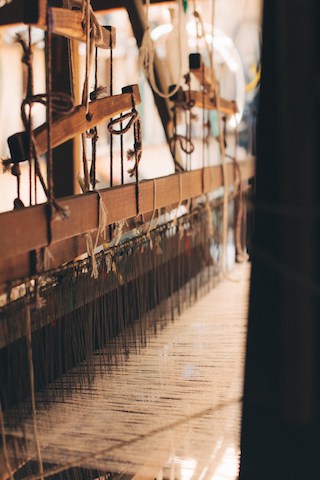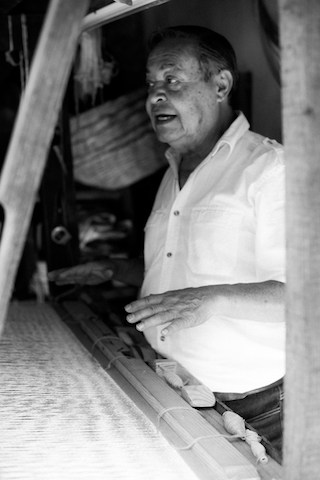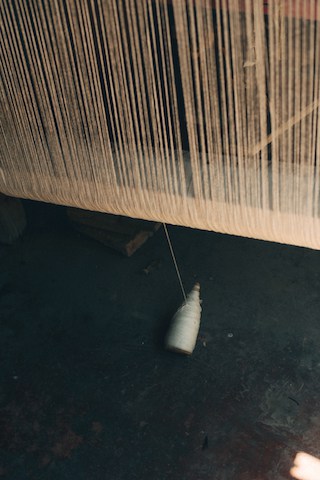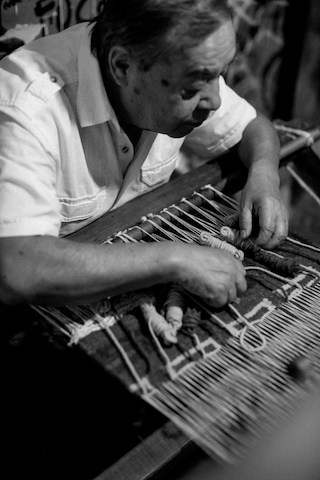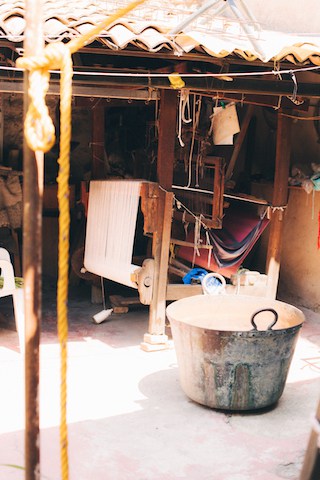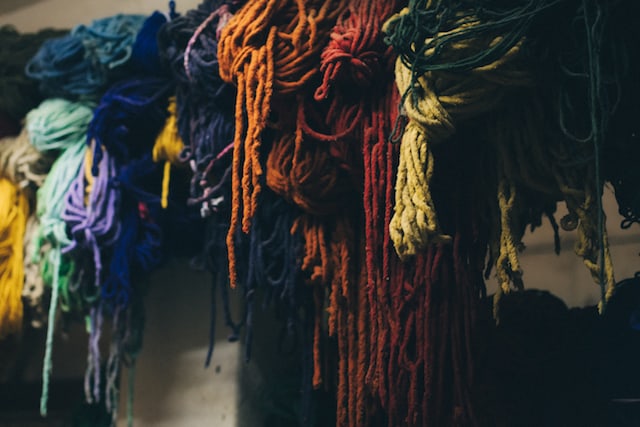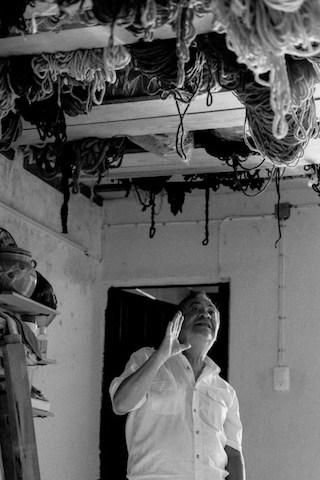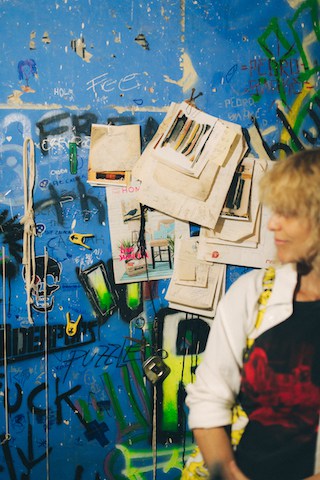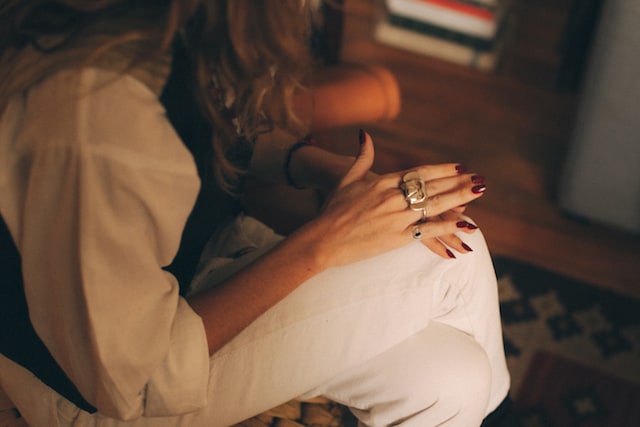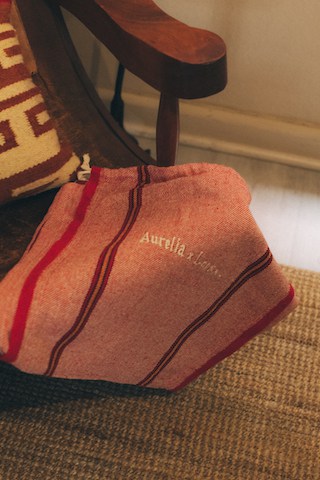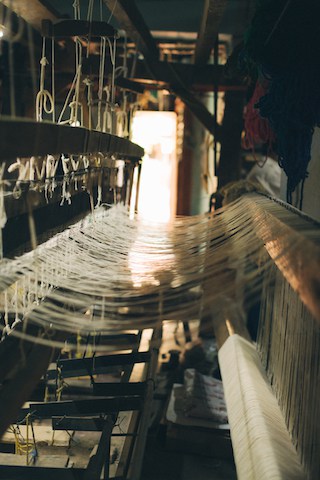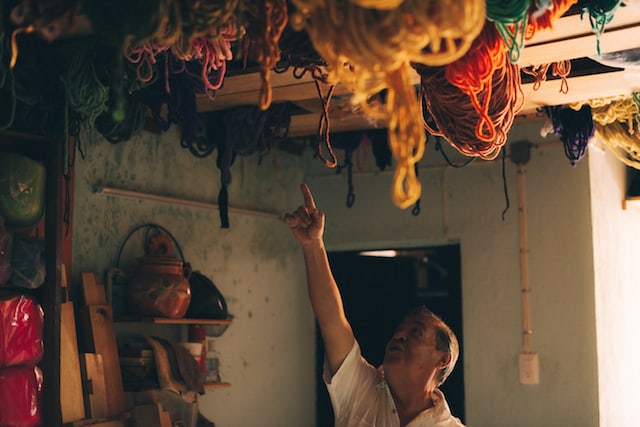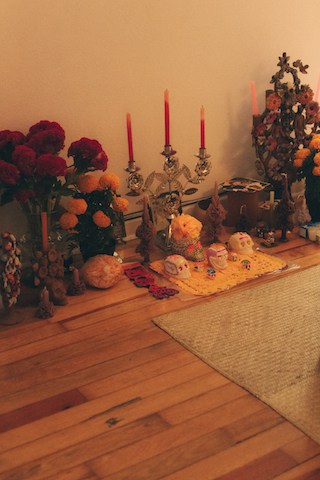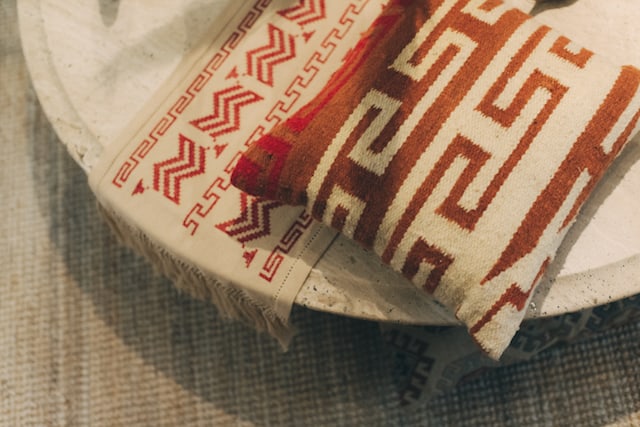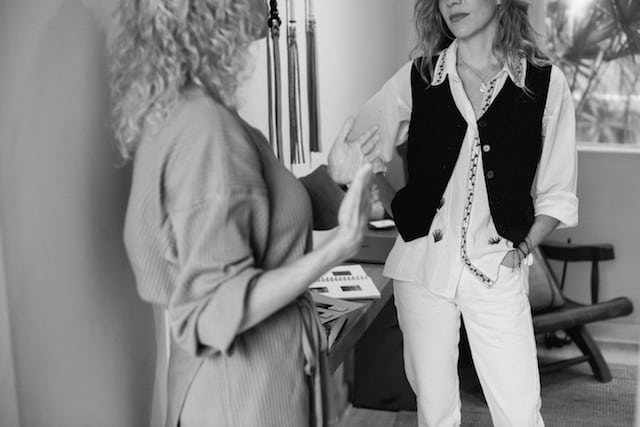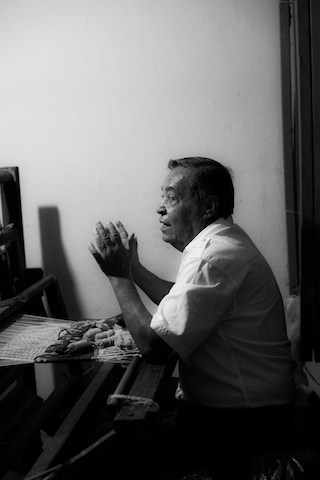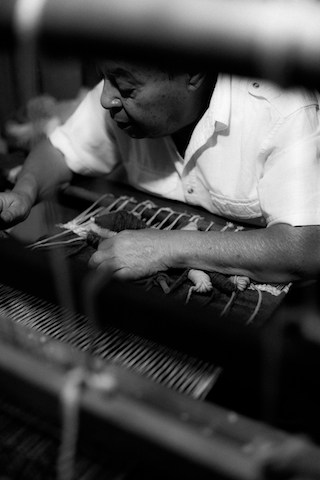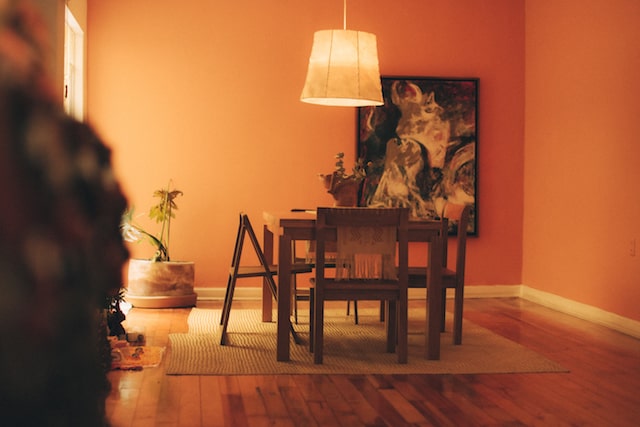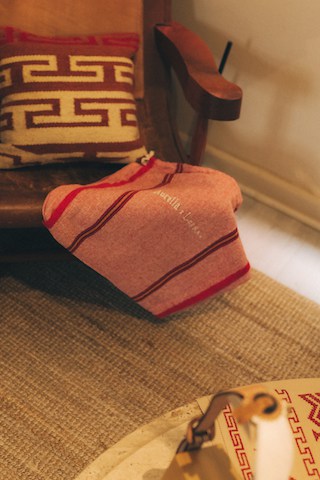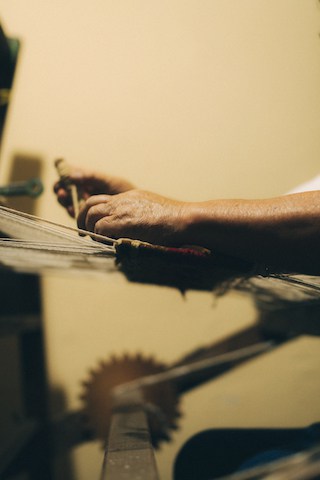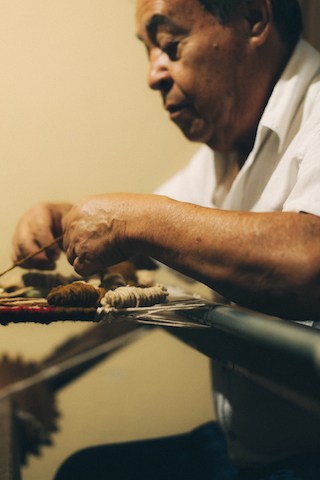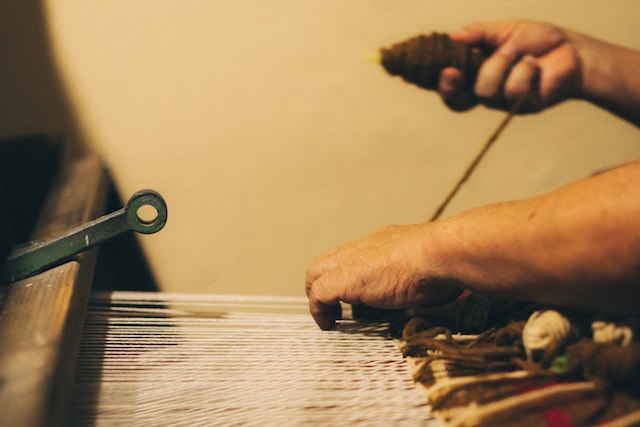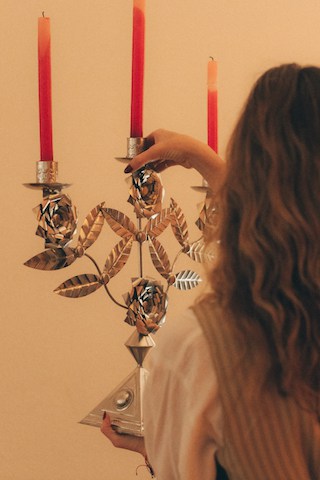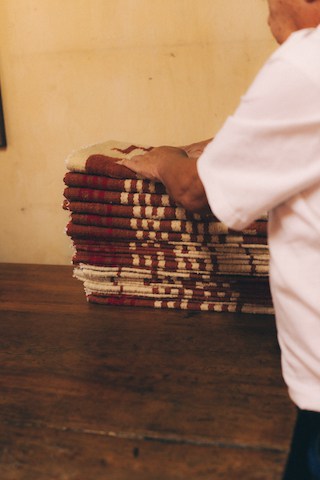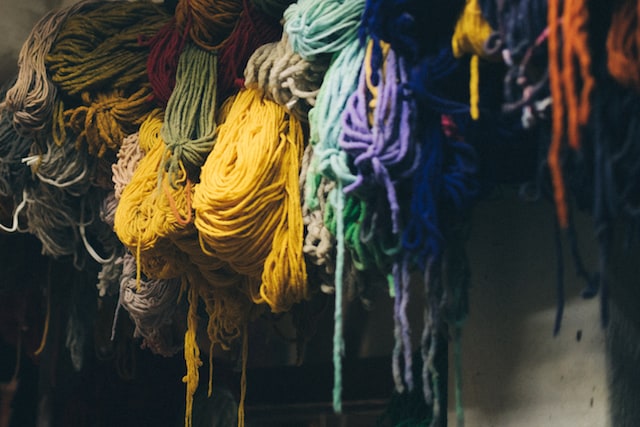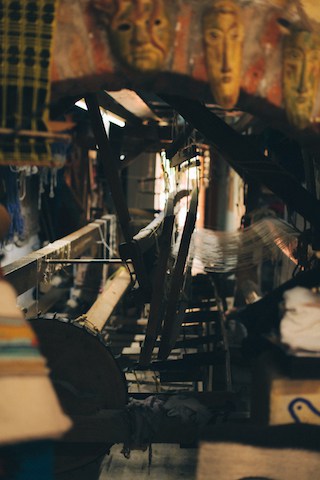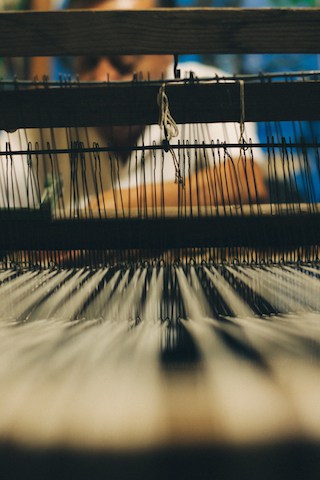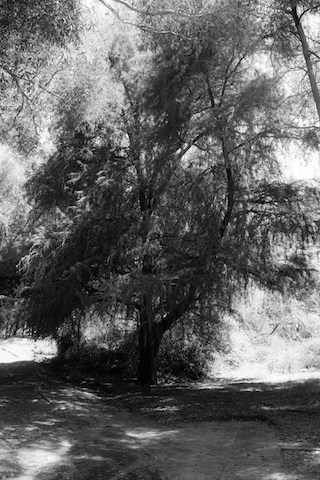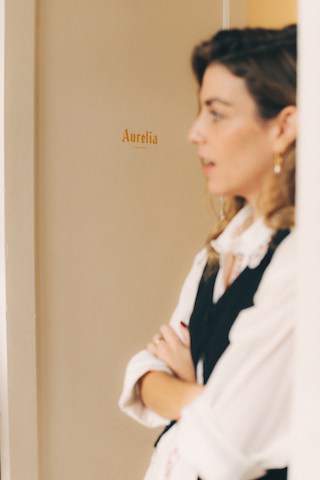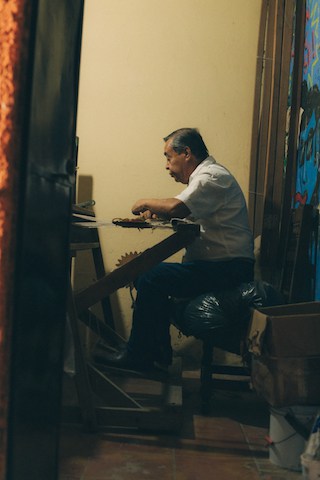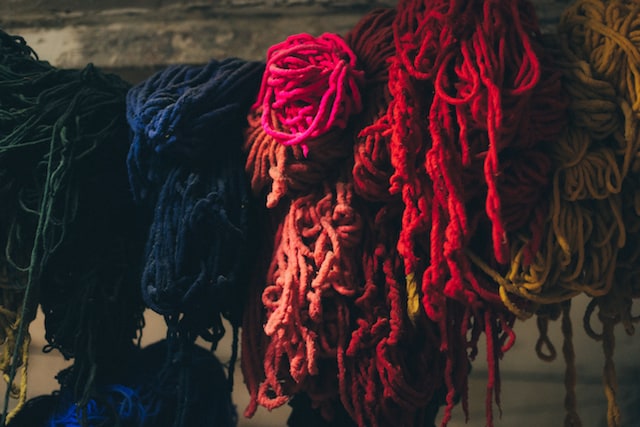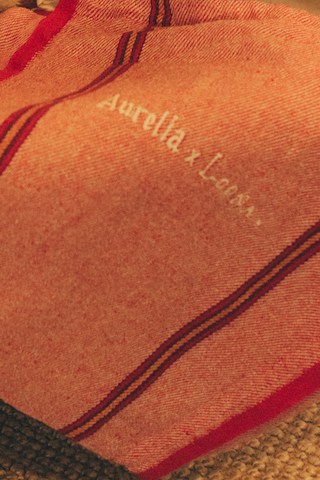
Between dreams and frets
I, Moon, want to tell you that one night I overheard three sisters talking about a piece they had been working hard on.
One of them spoke of the ways in which she would decorate it. She spoke of frets. Hearing that word reminded me of other nights when I saw peoples in Greece erect their Parthenon and the Temple of Athena. I also remembered some nights in Oaxaca, in which I enlightened Zapotec and Mixtec peoples to paint and draw shapes like the ones the sisters described.
I got excited and joined in their conversation. They told me that they’d found a wise-handed craftsman who embroidered and shaped this new canvas. It was a cushion. I immediately wanted one for myself.
Since then, I show this piece to the stars and planets that I talk to and tell them the story behind these frets. I tell them about pyramids, snakes and forests. I tell them about three sisters and the dream that they hand embroidered for me.
Process
“It arrived yesterday, after a year of working on it.” The one who says this, on the other side of the screen, is Andrea De la Torre as she holds with her hands the first cushion from “Tierra”, Loona’s Collaboration Eight.
Along with her sisters Paula and Magdalena, Andrea is the founder of the Mexican brand Aurelia, a firm that, since its launch in 2017, quickly became known thanks to its proposal of bags, recognizable for their iconic rectangular wooden silhouettes and their straps, which are made from authentic charro motifs.
With pieces like these, the firm also seeks to continue a tradition inherited by their Asturian grandmother, who taught them how to make crochet bags with recycled plastic. Her brand, by the way, is named just like her.
In 2020, Sharon Drijanski, founder of Loona, spoke with Andrea about a possible collaboration. “I wanted it to be something new,” recalls the designer, “I was very interested in exploring the idea of making home accessories. I really wanted to make charro cushions.”
With this idea in mind, she developed a plan that would allow her to make the pieces, which also mark the beginning of “Aurelia Casa”, a category that the brand intends to develop the following year.
For Andrea, as for everyone else, 2020 was a year full of challenges, as she recalls: “During the pandemic, six master craftsmen with whom I worked died. It’s become very difficult to find quality in artisanal work, especially since the children of these teachers no longer want to learn the trades that have been passed down from generation to generation; they no longer want to work on it.”
So she sought help. Through Paola Madero, founder of Aytana, a project established in Jalisco that promotes textile art, she met the person who could help her carry out the cushions project: an artisan from Tlaquepaque, Jalisco, named Don Pedro, an expert in the pedal loom work and charro textiles. It was he who made the first sample of the cushion. The second was carried out by artisans from Teotitlán del Valle, Oaxaca.
In the “Tierra” cushions there is not only shape, there is also substance, and the designs that she presents reflect her own personal concerns, as she recounts in our interview: “I’ve been exploring the origin of fretwork for three years and what each one represents. They’re ancestral designs that are present in the architecture of civilizations such as the Mayan or the Aztec. They represent various themes, from the animal to the non-human.”
From her interaction with artisans, Andrea drew ideas to reinterpret the motifs that have fascinated her for years. One day, one of the artisans she worked with in Jalisco, Don Chuy, told her that they had a catalog full of designs like these. He handed her a folder and Andrea was pleasantly surprised by what she found on those pages. “It was full of frets, one after another. When I started to see them I said: ‘this is beautiful’. The tension that existed between them, the way in which they dialogue…”
Although the charrería design dictates that the frets shouldn’t be combined in a single piece, Andrea dared to break the rules when creating the pieces for “Tierra”, as she explains: “Although they say that you should never use more than one and that everything must be uniform, I had loved how they looked next to each other, combined. So I took them as they were on the pages, just as they had arranged them in their catalog and I started to play with those ideas.”
This is how the “Tierra” cushions are inhabited by various frets that reflect pyramids, stars and other elements of nature in earthy and hand-dyed colors that are in frank dialogue with the theme of sustainability and the love for our planet. Making each piece requires approximately 50 hours and the expert hands of 12 artisans.
The pieces are also presented in a bag made of another of Aurelia’s fetish materials, jargon, with which they reinterpret a material commonly used for cleaning the home into a piece that is also suitable for accompanying those who use it to go to the beach or to the gym.
A year has passed since this story began. And beginning this month these cushions will provide a new vision to the decoration of the homes in which they’re placed. Andrea has every reason to be excited as she holds the pieces of “Tierra” in her hands for the last time. Like everything that comes out of her brand, there’s also a very Mexican gesture in them: there are a way of saying “Mi casa, tu casa.”
Collaborators
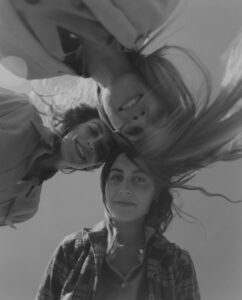
Aurelia
In 2017, sisters Andrea, Paula and Magdalena de la Torre, Parsons School of Design’s alumni, launched this accessories brand in Guadalajara. In its collections, the firm works with artisans specialized in the craft of wood and charrería design. This allows them to create accessories that empower women and reinterpret the traditions of Mexico.
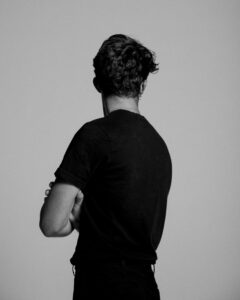
Ricardo Ramos
Ricardo Ramos’ visual approach is based on the intimate relationship between light and space. Something that goes hand in hand with his studies: Architecture and Art Direction (in London Central Saint Martins). He collaborates for different publications and clients, such as Vogue, Elle, L’Officiel, GQ, Condé Nast Traveler, Harper’s Bazaar, Rolling Stones, 192, Johanna Ortiz, Moda Operandi, El Palacio de Hierro and Ferragamo, among many others.
Shop the collection
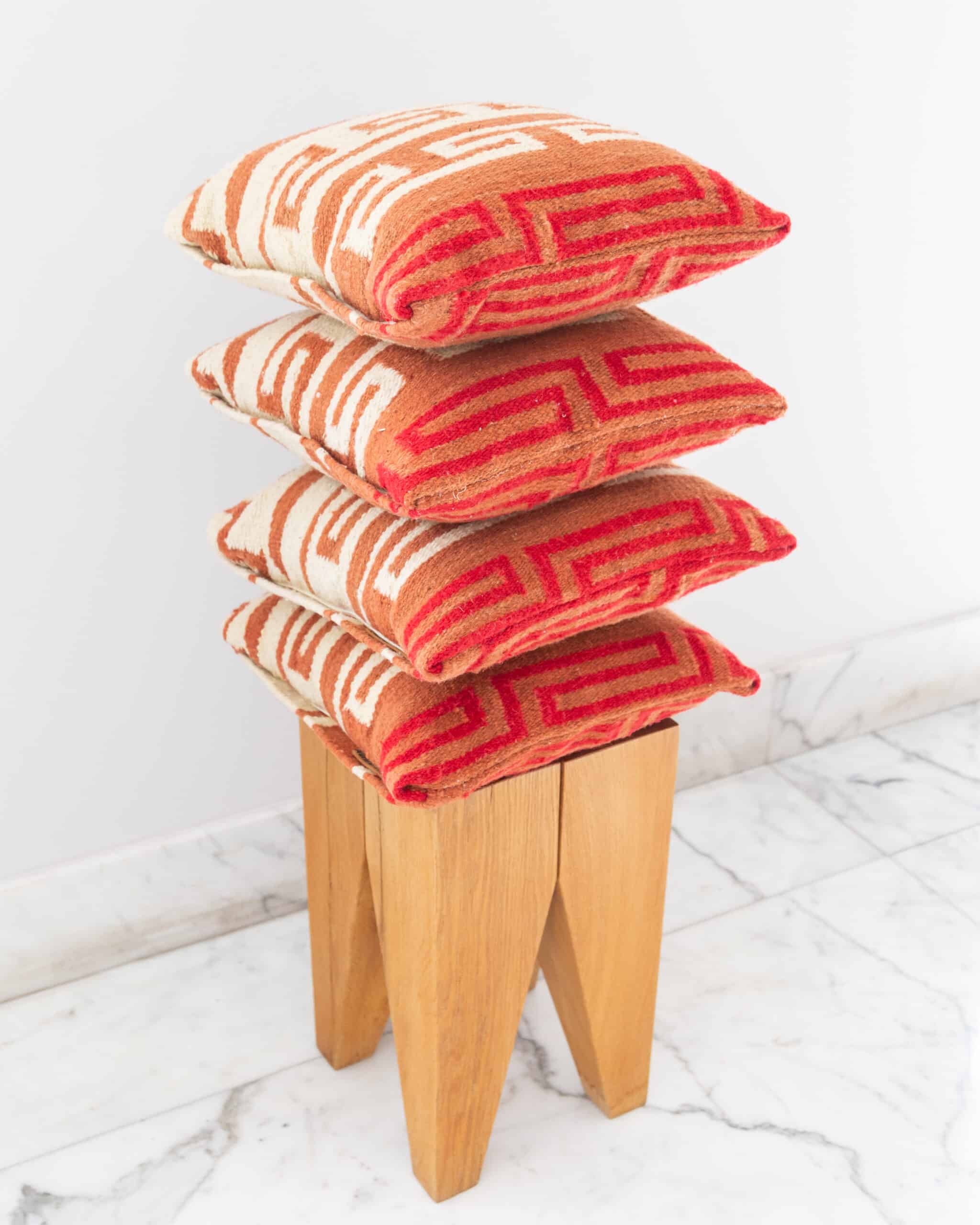
Tierra
· Cushion made on pedal loom.
· Made of natural wool in earth colors.
· Natural cotton filling.
· Made in Zapopan, Jalisco.
· Measures: 15.7” x 15.7 ” inches.
$ 280 USD.
AboutShopCurrent collaborationTerms and conditions
© Loona 2022 | All rights reserved | [email protected]


